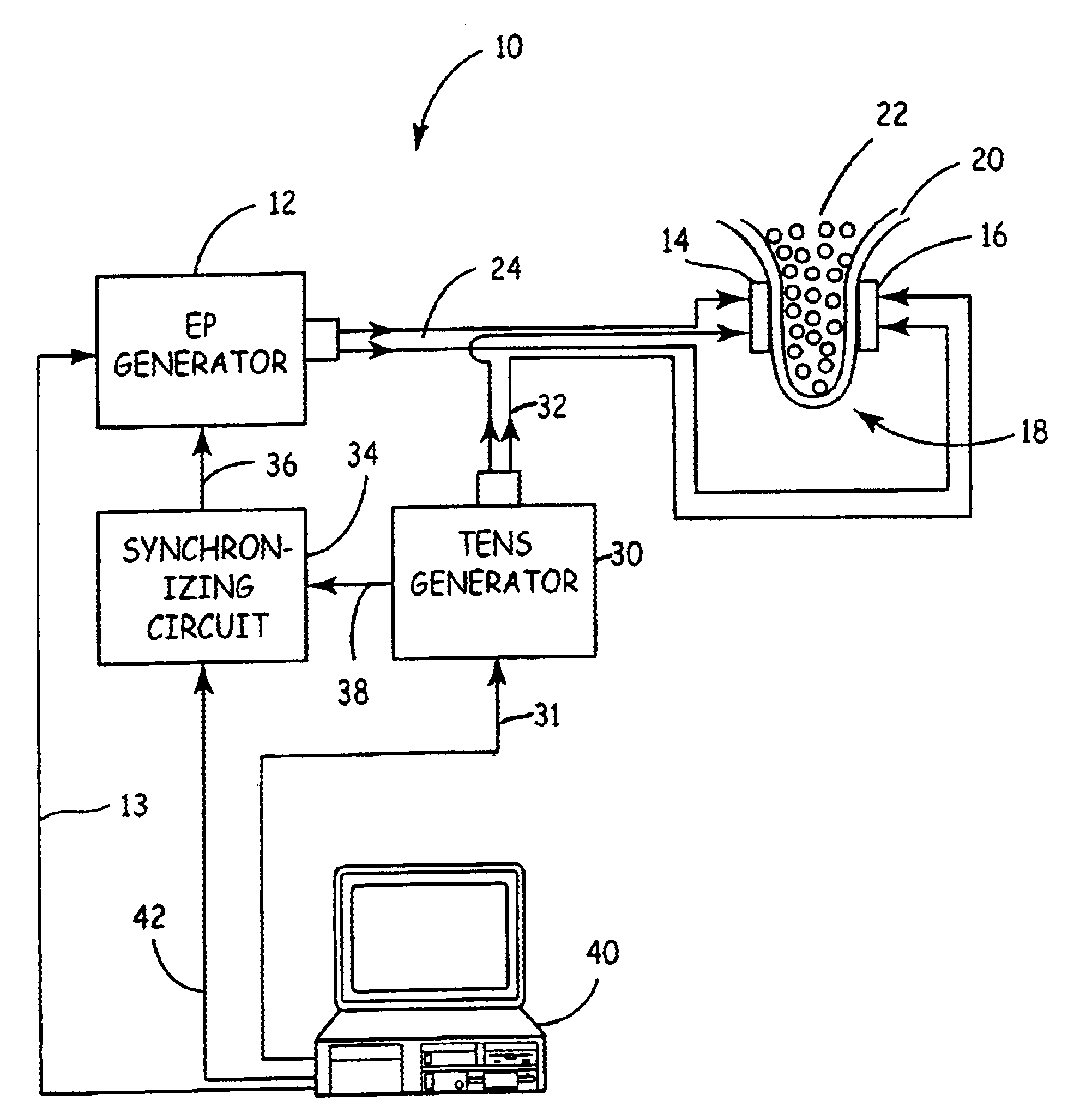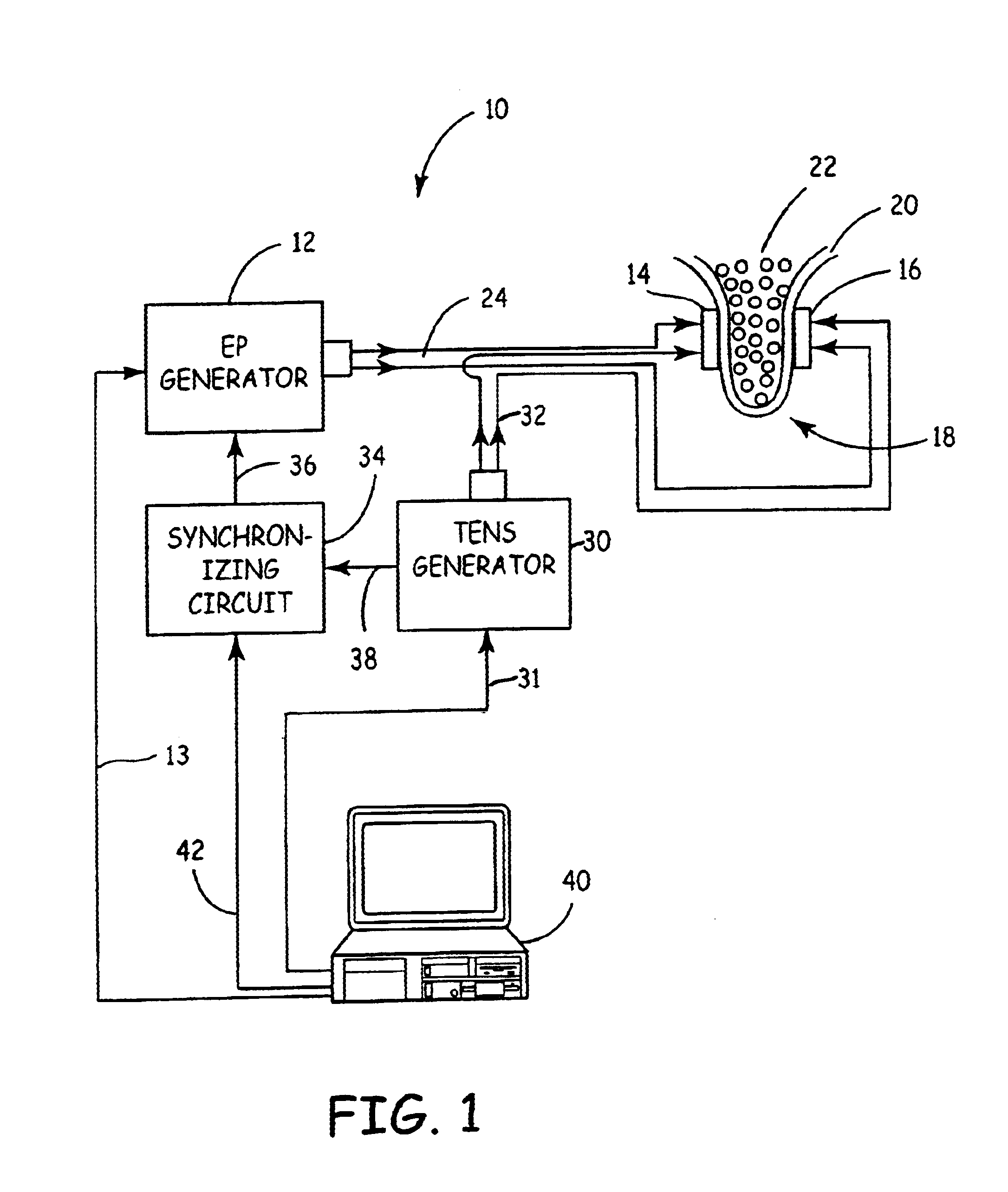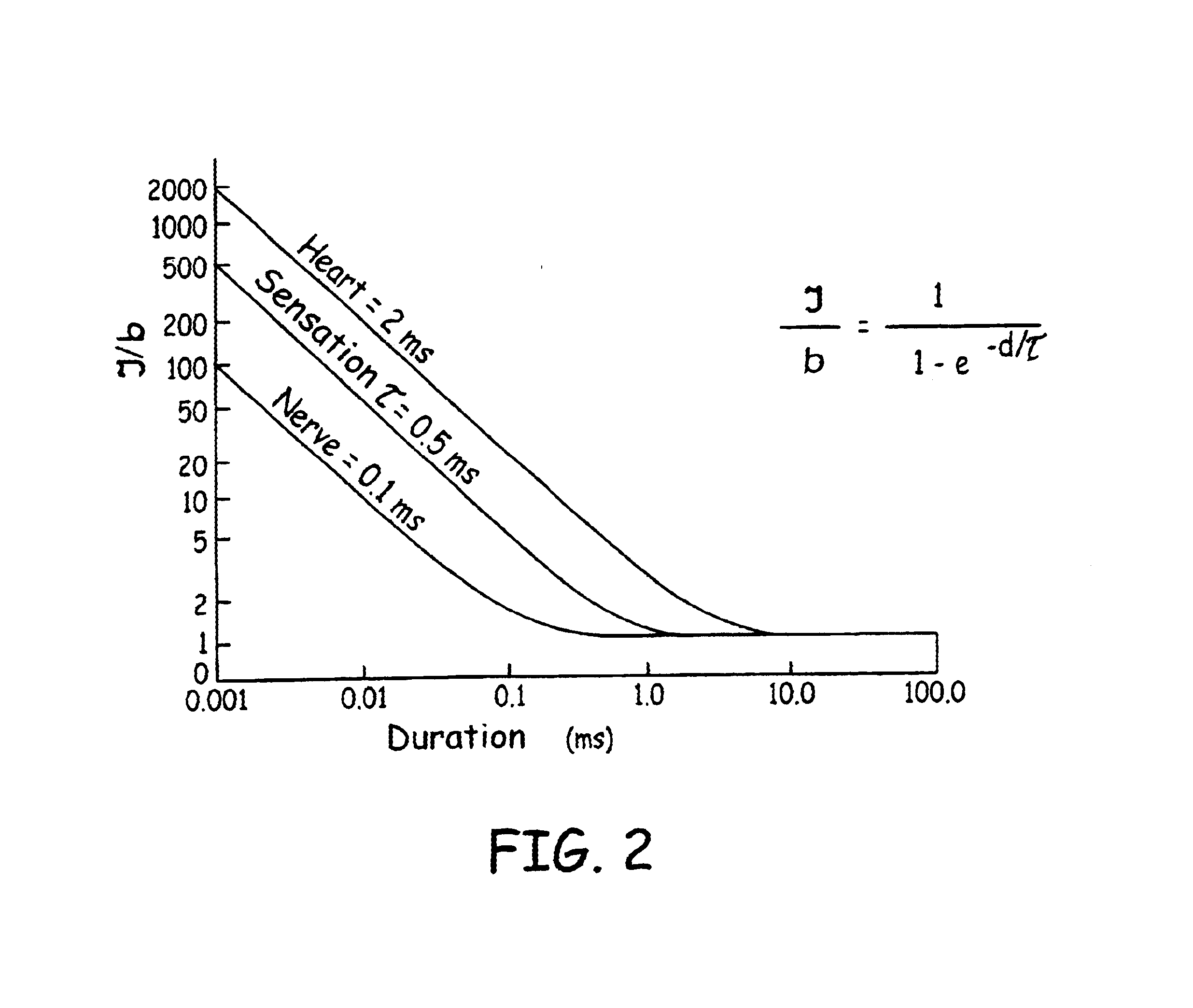Apparatus and method for reducing subcutaneous fat deposits by electroporation with improved comfort of patients
a technology of subcutaneous fat and electroporation, applied in electrotherapy, therapy, etc., can solve the problems of serious and unpleasant side effects, scarring, infection, and loss of sensation, and achieve the effects of reducing subcutaneous fat deposits, reducing discomfort, and increasing comfort for patients
- Summary
- Abstract
- Description
- Claims
- Application Information
AI Technical Summary
Benefits of technology
Problems solved by technology
Method used
Image
Examples
Embodiment Construction
FIG. 1 shows schematically an electroporation system 10 for in-vivo treatment of subcutaneous fat deposits and tightening of the skin. The system includes a high voltage electroporation pulse generator 12 and electrode sets (or arrays of electrodes) 14 and 16. The electrodes may be applied to a fold 18 of a patient's skin 20 with subcutaneous fat deposit 22 at a selected location on the patient's body for the purpose of applying electroporation therapy thereto. The high voltage electroporation pulses from generator 12 are delivered to the electrodes 14 and 16 via a multiple conductor cable 24. The electrodes 14 and 16 and the cable 24 may be secured to a hand held applicator adapted for manipulation of the electrodes on the patient's skin during EP treatment (not shown in the FIG. 1).
System 10 further includes a TENS generator 30 that is connected to the electrodes 14 and 16 via an appropriate connector 32. A synchronizing circuit 34 may be provided to introduce a controllable time ...
PUM
 Login to View More
Login to View More Abstract
Description
Claims
Application Information
 Login to View More
Login to View More - R&D
- Intellectual Property
- Life Sciences
- Materials
- Tech Scout
- Unparalleled Data Quality
- Higher Quality Content
- 60% Fewer Hallucinations
Browse by: Latest US Patents, China's latest patents, Technical Efficacy Thesaurus, Application Domain, Technology Topic, Popular Technical Reports.
© 2025 PatSnap. All rights reserved.Legal|Privacy policy|Modern Slavery Act Transparency Statement|Sitemap|About US| Contact US: help@patsnap.com



